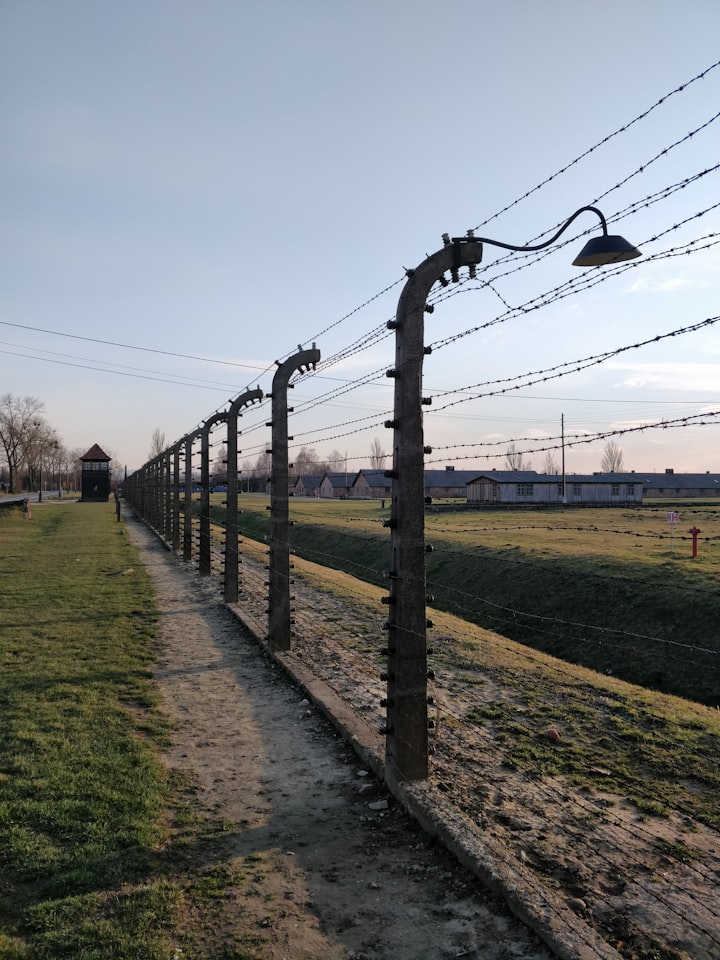The 13th Amendment
How Slavery in America Transitioned, not Ceased

“In America, we have not ended racial caste, just redesigned it.” – Michelle Alexander, author of “The New Jim Crow”
Mass incarceration is a social issue that continues to plague our country, particularly people of color. "13", A Netflix documentary covering this topic tells the narrative of how we got to this point as a country and a society- incarcerating 2.3 billion people in the U.S. With this being the highest incarceration rate in the world, we house about ¼ of the human population in our prisons. The 13th amendment states,
“Neither slavery nor involuntary servitude, except as a punishment for crime whereof the party shall have been duly convicted, shall exist within the United States, or any place subject to their jurisdiction."
It was implemented for it is unconstitutional to be held as a slave. The purpose was to grant freedoms to all Americans with the exception of criminals. The documentary focuses on how the “criminal” loophole was exploited and used to keep people of color as second- class citizens through economic tactics such as convict leasing and what we have now- Mass incarceration. Following the abolishment of slavery, farmers were able to utilize convict leasing for labor. This meant that once one committed a crime and went to jail, they were subjected to serve their time working on someone’s land, for nothing. Due to propaganda media such as “Birth of a Nation”, racial tensions continued to rise as horrific events took place in our nation such as what happened to Emmitt Till. “Birth of a Nation” depicted black men to be animalistic, even being a threat to white women. The demeanor in which the KKK depicted in the movie set the precedent for how the real KKK would operate in the United States, taking us into the “Jim Crow Era”. During “Jim Crow”, people of color were attacked, even murdered by mobs, and were being denied rights such as equality in education and the right to vote. The Civil Rights Act of 1965, implemented by Nixon, virtually ended “Jim Crow”, but led to an increase in crime thus leading to mass incarceration in 1970. In 1970, the United States prison population was 357,292. Almost doubling each decade, we were at 2,306,200 in population in 2014. This increase in the prison population is due to political strategies such as the “War on Drugs”- a metaphoric war implemented by Nixon turned into a literal war declared by Bush. Once Clinton became president, he implemented the “3 strike rule”, declaring if you have 2 felonies and commit a 3rd, it's highly likely you’re going to prison for 25 to life, along with the mandatory minimums for crimes committed. The mandatory minimums were significant because it took power from judges and juries who are ordained to make decisions on how the law is interpreted to prosecutors, those who benefit from convictions. The “truth in sentencing law” required offenders to serve at least 85% of their time, causing issues like overcrowding in prisons.
The documentary takes a turn when it exposes the American Legislature Exchange Council, which is a lobbying group that allows for senators and corporations to network and collaborate on various laws that would potentially benefit these corporations and the people that run them. ALEC is responsible for writing laws such as the “Stand your Ground” law that allowed for George Zimmerman not to be charged for the death of Trayvon Martin, a black teenager mistaken for being armed while walking home from a convenience store. We also learn that the CCA is the stakeholders for the prison system, in which the documentary also examines the correlation between prison privatization and the increase in criminalization. This increase leads every 1 in 3 black men to be faced with the criminal justice system at some point of his life even though black men are only 6.5% of the U.S population, and 1 in every 17 white men being affected by the criminal justice system and they make up 42% of the U.S population. Examining these numbers, it becomes obvious that black men are overrepresented in the United States Prison System.
I have seen this documentary twice and each time I take away a feeling of deep hurt. Mass incarceration is a plaque that deeply troubles the community in which I come from. As a black social work student, this subject draws my attention, to say the least, affecting me both professionally and personally. To watch the exploitation of my people played out on the screen from beginning to end was difficult. Many feelings, particularly pain and anger, came over me as I sat and watched this. This documentary exposed an evolution of an oppressive system that continues to plague my community until this very day, turning my attention to the men in my life. Each time I watch this documentary or any of the videos of the police shootings, I grab them and hold them close to me and pray that this never happens to them. I sit and think to myself, how would I react, what would I do, what would my community do if this happened to me or my brother, how would they react? How would the city of Topeka react? Am I next? This is a troubling feeling that I could not describe. One would definitely need to be in the shoes of a person of color in order to truly understand this kind of anxiety and fear. The documentary tells the story of Kalief Browder, a man who was awaiting trial in jail for 3 years for a crime he did not do. While locked up, he suffered mental and physical trauma that led to mental illness lasting after his release. Just 2 weeks after being found not guilty and being released from jail, the PTSD became too much for him and he committed suicide. This bought me to tears because I could not help but be angry at a system that had failed him terribly.
At the end of the documentary, there were flashbacks of our nation’s past of black people being hosed in the streets for trying to protest for being treated unequally. The commentary added by Donald Trump to these images reminds us how easily history can repeat itself. Using terms such as “good ole days “and “law and order”, referencing our nation’s future with the skeletons of our nation’s past, is a path that is becoming more vivid each day as we get closer to election day. I cannot describe the anxiety I felt listening to Trump's words and looking at those images. What’s next for this nation? What is next for African Americans? Yesterday we called in slavery, today was call it mass incarceration, what will it be called tomorrow? We will overcome mass incarceration just as we have overcome slavery and Jim Crow, but what’s waiting for us around the corner?
About the Creator
Ashley La'Donn
Freelance writer, aspiring author, Social Worker, Non Profit Consulant, Future Executive Director, Herbal Hippie, and Mommy.






Comments
There are no comments for this story
Be the first to respond and start the conversation.